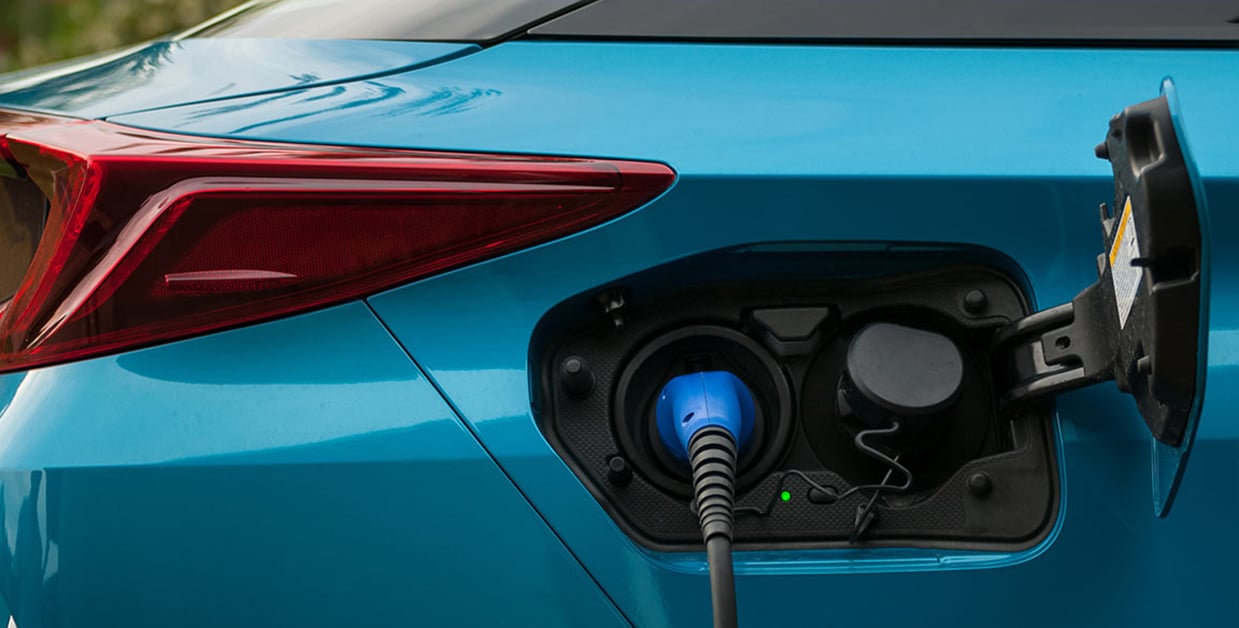Alternative drives are the trend. The future of mobility is electric. Electric vehicles are not only locally emission-free, but also cause fewer emissions in the overall balance (well to wheel). In addition, electric drivers are more efficient on the road than those with combustion engines. Legislators reward the advantages of electric mobility with better tax treatment. In addition, environmental debates in cities lead to privileges for electric vehicles such as the use of bus lanes.
Companies that want to electrify their fleet are now faced with the question of which electric drive system is suitable for them. Because it is no longer just a question of diesel or petrol. There are several alternative drive systems to choose from. These include pure electric vehicles, hybrids, range extenders or micro-electrics.
Pure electric vehicles, hybrids, range extenders or even micro-electrics. Alternative drives - which one suits you?
PURE ELECTRIC VEHICLES: MOBILE WITH BATTERY
In purely electric vehicles, only an electric motor operates, which is supplied with power from the battery installed in the vehicle. Pure electric vehicles are charged via the power grid and are able to store braking energy in the battery (recuperation). The capacity of the battery determines the range of the pure electric vehicles.
RANGE EXTENDER: CAN IT BE A LITTLE MORE?
The range extender - range extender - is a usually small combustion engine, which, however, does not operate the drive train, but charges the battery in electric vehicles. When the battery status is low, the auxiliary motor keeps the battery at a constant charge level and prevents the vehicle from coming to a standstill with an empty battery. Range extenders are still justified because of the currently expensive battery technology and partly low capacities.
HYBRIDS: ELECTRIC WITHOUT CABLES
Hybrid vehicles combine an electric motor and a combustion engine. In serial hybrids, the combustion engine charges the battery and the drive is electric. In parallel hybrids, the combustion engine also drives the drivetrain and charges the battery necessary for electric operation. The parallel hybrid drive enables smaller and thus usually cheaper individual components. Parallel hybrids run electrically in the partial load range, e.g. in urban areas or on short journeys. At higher loads, the combustion engine switches on. Hybrids have range advantages over purely electric vehicles. In addition, long charging times are eliminated in favour of "normal refuelling stops".
PLUG-IN HYBRIDS - HYBRIDS WITH POWER CONNECTION
In a nutshell, plug-in hybrids also charge the batteries via the power grid in addition to the combustion engine. However, there are still two engine systems (electric and combustion). Plug-in hybrids originate from the idea of covering shorter distances entirely electrically and dispensing with the combustion engine for battery charging, at least in part. Similarly, a plug-in hybrid retains the range advantages of hybrid vehicles.
PRIVILEGED WITH "E-MARKING
The Electromobility Act (EmoG) of 2015 allows municipalities to privilege vehicles. This may involve exemptions from parking fees or allowing them to use bus lanes. E-plates can be issued to all purely electric and fuel cell vehicles. In addition, owners of plug-in hybrids can apply for the E-plate if the vehicle either emits no more than 50 grams ofCO2 per kilometre or can cover at least 40 kilometres (since 1 January 2018, previously 30 kilometres) in all-electric mode.
Alternative drive systems: WHICH TECHNOLOGY IS IN CHALLENGE?
Alternative drives are the future, but the question of which electric vehicle category is suitable for fleets and vehicle fleets cannot be answered in a blanket manner. Requirement profiles and economic considerations play just as much a role as charging infrastructure on one's own property, in the municipality or even region, as well as image impact and the use of privileges. Fleet and vehicle fleet managers should weigh up the factors in order to find individually suitable solutions. An e-mobility calculator that compares costs andCO2 emissions can be helpful.
The range of vehicles is expected to improve significantly in the next two years, at least that is what the announcements of the vehicle industry suggest. So it is definitely worthwhile to keep up to date with the latest developments in the future.
Especially in the segment of light commercial vehicles, the offer is currently rather narrow, although there is enormous potential here as well. We hope that there will also be innovative approaches here in the near future.



